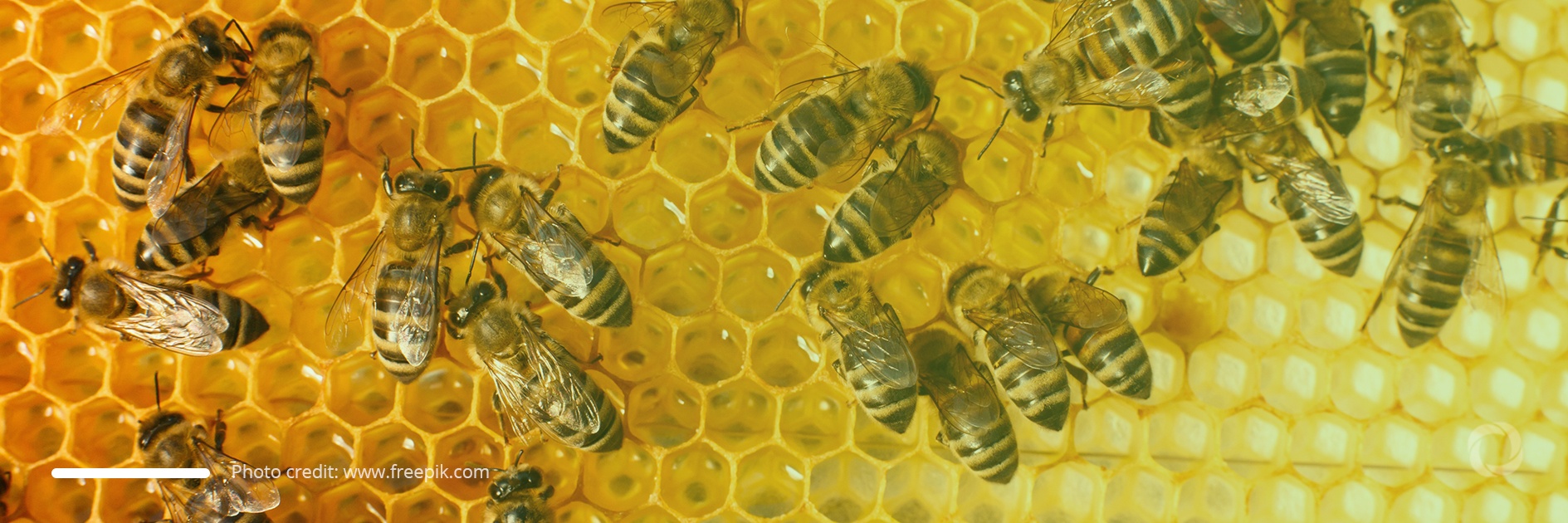A wide range of wildflower plants around the globe, along with food crops, rely on animal pollination including that of wild and domesticated bees. Every day, a single colony of bees can pollinate 300 million flowers. Although a decline in bee populations around the globe could lead to catastrophic consequences for humanity, people are the main cause of bee habitat destruction and bee poisoning. According to the United Nations, it is crucial to safeguard bees in order to tackle hunger and malnutrition.
Why are bee populations important?
Nevertheless, a number of European, Asian, South, and North American countries have seen a significant fall in bee numbers. Among the possible causes, scientists list pesticides, poor nutrition, infections, the varroa destructor (a parasite that feeds on honey bees), and stress.
Why are bees dying?
According to the 2019 report presented by the Food and Agriculture Organization (FAO) of the United Nations, many biodiversity-related species such as bees are constantly declining in many regions around the world.
Scientists believe this is due to habitat destruction, the use of agricultural pesticides in high quantities, and rising temperatures related to climate change and air pollution.
As far as climate change is concerned, due to the delayed reaction of biological systems, it is almost impossible to assess its effects (i.e., groundwater depletion, soil retrogression, and degradation) on pollinators and pollination services on agriculture. The impacts may become apparent after several decades. Should this trend continue, healthy crops like fruits, vegetables and nuts will be replaced by staple crops such as rice, corn, and potatoes with the outcome being an unbalanced diet.
Pesticides and their connection to bee population decline
According to Greenpeace scientific research, there are seven main bee-killing chemicals. The list features three nicotine offenders along with chlorpyrifos, cypermethrin, deltamethrin, and fipronil. The neonicotinoids affect the neurological systems of insects. They build up in individual bees as well as whole colonies and particularly in the honey that bees use to feed larvae. However, bees do not die immediately, they begin to suffer from sub-lethal systemic effects, develop weakness, and experience disorientation.
A 2020 study carried out by Doug McMahon, Stevenson Chair of Biological Sciences, attempted to establish a connection between neonicotinoid pesticides and their impact on bees. Entitled “Neonicotinoids disrupt circadian rhythms and sleep in honey bees”, the research reports that when bees pollinate plants that have been treated with pesticides featuring non-lethal amounts of neonicotinoids, they lose sleep which creates a disturbance in their circadian cycle.
As a result, honey bees lose their sense of time and navigation, resulting in increased stress in highly social bee populations and a decline in hive survival rates.
What are neonicotinoid pesticides?
The name implies that chemically these insecticides are similar to nicotine. Neonicotinoids are active chemicals found in plant protection treatments that are intended to combat dangerous insects.
Pesticide restrictions and ban
To safeguard honeybees, the European Commission has imposed stringent restrictions on the use of plant protection chemicals containing three neonicotinoids (clothianidin, imidacloprid, and thiamethoxam). All outdoor use of these three compounds is prohibited except for in permanent greenhouses.
Save the bees
The research entitled “The assessment report on pollinators, pollination and food production” identifies a number of strategies for protecting pollinator populations while also preserving biodiversity and ensuring food security:
- Pollinator exposure to pesticides can be reduced by limiting pesticide use, pursuing alternative pest control methods, and implementing a variety of particular application procedures such as pesticide drift reduction technology.
- Pesticide use can be reduced by adopting Integrated Pest Management – an effective and ecologically friendly pest-control strategy based on a combination of common-sense methods.
According to the report, there are three complementary techniques to keep pollinator communities healthy and agriculture productive:
According to the recommendations given by the FAO, farmers should gain a better understanding of the optimal quantity of pollination needed to enhance crop yields as well as examine whether the levels of pesticide and fertilizer used in fields are appropriate. Pollinators such as bees have traditionally been taken for granted but only recently have people realized that protecting bees and other pollinators are critical for the economies that rely heavily on them.

